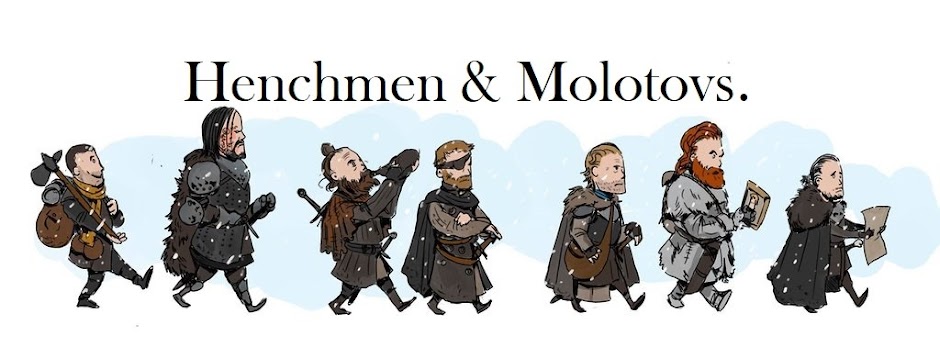Encumbrance is important.
Encumbrance is the word we use to mean “all the stuff I am carrying,” in terms of its weight and its bulk. The more you are encumbered, the more effort it takes to move and therefore the slower you will do it.
In the oldest versions of these games, encumbrance was measured coin-by coin, as a coins-weight is conveniently set at 1/10 of a lb. With the encumbrance of everything denominated in multiples of a coin, you will only have to track the changes in one number over time. On the down side, keeping track of what you’re carrying is very fiddly and time-consuming at the table, the time when knowing the number is most important.
The dungeoneering part of the Great Game, the part featured first in its name, is a game of prudence, judgment and fortitude.
We have some idea of the peril our characters will face. In newer games, we handle a lot of the challenge with skills and powers on our sheet. Character skill trumps player skill. But in older games, there are no character builds; one fighting-man is much like another. Life and death are in your hands, not the character’s.
In part, preparing for the perils he may face means bringing the right equipment;!pert of the puzzle is exercising prudence before the delving begins. In an ideal world, we could bring everything we need for every situation. Gear costs money - and more importantly, gear takes up space. What is critical and what you can (probably) afford to leave behind.
When our figures are in the mythic underworld, we use our judgment about which dangers may lurk in the immediate future. Are you going to kick in the door and slay the orc, or are you going to sneak past? Will you bet your hit points against that blade trap, or will you attempt to disable it? Did your man bring the right tool to do that?
When you find a hoard of gold, how much do you pick up? Do you take so much that you need to leave your armor behind? I mean, hey, that’s a lot of gold, and behind you, you think you cleared a path to daylight. What could possibly go wrong?
Finally, dungeoneering is a game of fortitude. When you have run low in those resources, how much more are you willing to risk? If you had to run, could you do it holding all this stuff?
Note well that in each case, you’re working against another, invisible, inscrutable element: Lady Fortuna, whether today be she grim or be she gay. That is, the game is swingy and things can go sideways very quickly. Balancing risk and reward are important. Minimizing the effects of luck are important. One key to maintaining that balance is tracking your encumbrance.
Throughout the evolution of the game, some folks have tried to adhere to the encumbrance rules that Gary dictated. Some have outright ignored encumbrance. This is unsatisfactory for all the reasons we’ve mentioned. Others have faced the challenge and looked for better ways to manage encumbrance (among other game systems.)
Surprisingly, video games have given us a hand tracking encumbrance with the innovation of slot-based inventory. Slot-based inventory turns a chore into a fun puzzle.
There are three special rules though.
The first one has to do with strength scores. Characters who take a strength penalty can only carry 5 containers; characters with a strength bonus can carry 7. A magic item which boosts your strength above 18 grants an 8th container, while a condition which lowers your strength below 3 removes two containers (leaving you with four.)
The second one has to do with armor.
The bulkiest item you carry is your armor. Leather fills one “container,” chain fills two, and plate fills a third. A helmet fills one slot and a shield fills two slots, so the more heavily armored character already has four of his six containers filled by armor.
The final one is special for dwarfs. Dwarfs move slowly but they are built to carry more. They can carry a whole extra container without collapsing under the burden, but they can only gain access to the ability when each of their other slots is completely full.
Encumbrance and movement:
Wearing leather armor doesn’t slow you down. Wearing chain armor drops your move speed to 9”. Plate drops it to 6”.
Regardless of armor level, having less than nine slots open drops your move to 9”. Having less than six slots open drops you to 6”. Having less than three open drops you to 3” of movement. Having every slot filled means you lose your DEX bonus to all appropriate rolls.
Dwarfs, again, are a special case. Their base move is 9” so they can wear chain armor without slowing. Furthermore, once they are fully burdened, an additional container becomes available with three more item slots. Thus a dwarf with exceptional strength has access to 24 item slots, if he doesn’t mind crawling along.
Tiny items:
Some items are so small that even a handful of them won’t fill up a slot. We can assume they go in pockets. Chalk, needle and thread, a lucky cockatrice foot, a piece of coal. These don’t take up an item slot, but be reasonable about how many your figure can carry.
Coins:
Adventurers collect coins. It’s kind of their thing. 100 coins can fit in your pockets, but more than that need to go into item slots. Each 100 coins above your free 100 fill an item slot. 300 of them would fill a sack, for instance. Also true for a like number of loose gems. Part of that encumbrance is their bulk, but most of it is their weight.
NEXT TIME: let’s talk about magical jewelry and body adornment.





No comments:
Post a Comment
Stay focused.